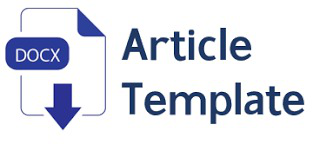Penerapan Prinsip Kehati-hatian dalam Kebijakan Perlindungan dan Pengelolaan Lingkungan Hidup di Bidang Pertanian Untuk Keunggulan Varietas Produk Rekayasa Genetik
DOI:
https://doi.org/10.14421/sh.v3i2.1971Abstract
Study the application of the precautionary principle in environmental protection
and management in agriculture for excellence varieties of genetically modified products
get answers: First; Ignoring the principle of prudence in Environmental Protection and
Management in the Regulation of the Minister of Agriculture Policy No. 61 /
Permentan / OT.140 / 10/2011 on Testing, Assessment, Waiver and Withdrawal
varieties, there is a tendency to Regulation is made only for the sake of short-term and
to mengakomudir interests of investors and entrepreneurs, as well as ignoring the
precautionary principle in the product of genetic engineering. The Second; Due to
Neglect Law Precautionary Principle in Agricultural Policy Regulation No. 61 /
Permentan / OT.140 / 10/2011, causing chaos or legal uncertainty, so the validity
ineffective and inefficient. The Third; Results Formulation Formulation of Policy
Regulation of the Minister of Agriculture No. 61 / Permentan / OT.140 /
10/2011 on Testing, Assessment, Waiver and Withdrawal varieties responsive and
accommodating to the precautionary principle in environmental protection and
management in Indonesia, done with the precautionary principle as set out in Article 2f
UUPPLH with description and Article 3 of Regulation No. 21 of 2005 and an
explanation, and as the implementation of the precautionary principle before
melakukakn assessment activities, Waiver and Withdrawal varieties must pass the
EIA, Environmental Permits and Environmental Risk Analysis.
References
Asshiddiqie Jimly, “Green Constitution” Nuansa Hijau Undang-Undang Dasar
Negara Repubik Indonesia Tahun 1945, Jakarta: PT. Raja Grafindo
Persada, 2009.
______, Pengantar Pemikiran UUD Negara Kasatuan RI. Jakarta: The
Habbibie Center, 2001.
D. Freestone dan E. Hey, “Origin and Development of the Precautionary
Principle”, dalam: D. Freestone dan E. Hey (eds.), The Precautionary
Principle and International Law: The Challenge of Implementation The
Hague: Kluwer Law International, 1996.
Gaus, F. Gerald, dan Chandran Kukathas, Handbook Teori Politik, Jakarta:
Nusamedia, 2012.
Wibisana, G. Andri, Theree Principles of environmental law: The Polluter-Pays
Principle, The Principle of Prevention, and the Precautionary Principle, dalan
Michael & Nicole Niessen (udited) environmental law in Development,
Lesson from the Indonesia Experince, Cheltenham UKNothampon,
MA, USA: Edward Elgar Publishing, Inc, 2006.
Helmi, Hukum Perizinan Lingkungan Hidup, Jakarta: Penerbit Sinar Grafika,
Wibisana Andri, G., Konstitusi Hijau Perancis: Komentar atas Asas
Kehati-hatian dalam Piagam Lingkungan Perancis 2004, Jurnal
Konstitusi, Volume 8, Nomor 3, Juni 2011 ISSN 1829-7706.
Shavell, S. “An Analysis of Causation and the Scope of Liability in the Law of
Torts”. Journal of Legal Studies, Vol. 9 (3), 1980
Steinemann, A. “Rethinking Human Health Impact Assessment”.
Environmental Impact Assessment Review, Vol. 20, 2000.
S. Shavell, “An Analysis of Causation and the Scope of Liability in the Law of
Torts”, Journal of Legal Studies, Vol. 9 (3), 1980.
Undang-Undang Dasar Negara Republik Indonesia Tahun 1945.
Undang-Undang No. 5 Tahun 1960 tentang Peraturan Dasar Pokok-
Pokok Agraria Lembaran Negara Republik Indonesia Tahun
No. 104, Tambahan Lembaran Negara Republik Indonesia
No. 2034.
Undang-Undang No. 32 Tahun 2009 tentang Perlindungan dan
Pengelolaan Lingkungan Hidup, Lembaran Negara Republik
Indonesia Tahun 2009 No. 140 Tambahan Lembaran Negara
Republik Indonesia No. 5059.
Undang-Undang No. 12 Tahun 2011 tentang Pembentukan Peraturan
Perundang-undangan, Lembaran Negara Republik Indonesia
Tahun 2011 No. 82.
Undang-Undang No. 32 Tahun 2004 tentang Pemerintahan Daerah,
Lembaran Negara Republik Indonesia Tahun 2004 No. 82,
Tambahan lembaran Negara Republik Indonesia No. 4437.
Peraturan Pemerintah No. 21 Tahun 2005 tentang Keamanan Hayati
Produk Rekayasa Genetika (PRG).
Peraturan Pemerintah Republik Indonesia No. 27 Tahun 2012 tentang
Izin Lingkungan, Lembaran Negara Republik Indonesia Tahun
No. 48.
Peraturan Menteri Negara Lingkungan Hidup Republik Indonesia No. 05
Tahun 2012 tentang Jenis Rencana Usaha dan/atau Kegiatan yang Wajib Analisis Mengenai Dampak Lingkungan Hidup, Berita
Negara Republik Indonesia Tahun 2012 No. 408.
Anonymous. “Bt Cotton through the Back Door”. Seedling, 18 (4)
http://www.grain.org/seedling/?id=151, 2001. Diakses pada
Agustus 2013.
Li, T.C. “Farmer’s Bane: GMOs”. The Star, 2 Maret 2004. Dikutip dari:
http://www.mindfully.org/GE/2004/Farmers-Bane- GMOs2mar
htm. Diakses tanggal 13 Agustus 2011.
Saraswati, M.S. “KPK to investigate Monsanto Bribery Case”. The Jakarta
Post, 1 Oktober 20105. Tersedia pada: http://
www.thejakartapost.com/news/2005/01/10/kpkinvestigatemonsanto-
bribery-case.html. Diakses tanggal 13
Agustus 2013.
http://sains.kompas.com/read/2011/10/19/03072179/Cermati.Dampak
.Transgenik,Diakses tanggal 20 Agustus 2013








